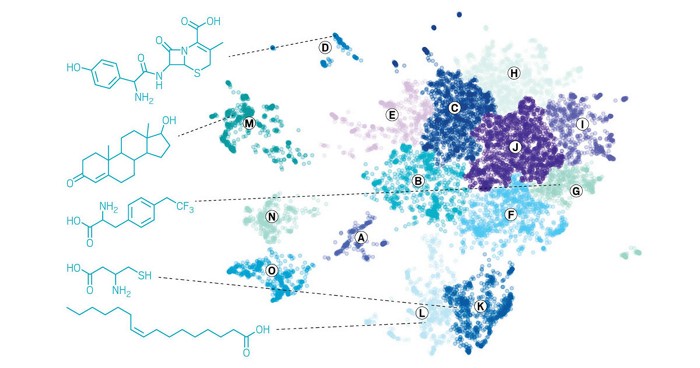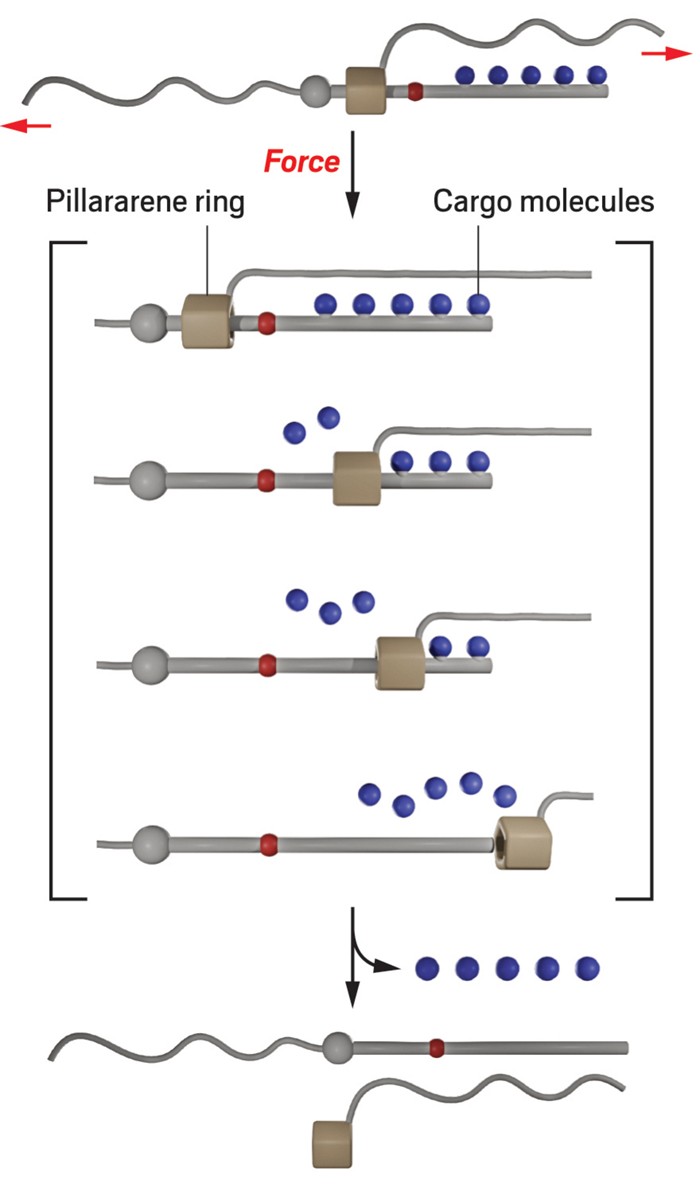Advertisement
Grab your lab coat. Let's get started
Welcome!
Welcome!
Create an account below to get 6 C&EN articles per month, receive newsletters and more - all free.
It seems this is your first time logging in online. Please enter the following information to continue.
As an ACS member you automatically get access to this site. All we need is few more details to create your reading experience.
Not you? Sign in with a different account.
Not you? Sign in with a different account.
ERROR 1
ERROR 1
ERROR 2
ERROR 2
ERROR 2
ERROR 2
ERROR 2
Password and Confirm password must match.
If you have an ACS member number, please enter it here so we can link this account to your membership. (optional)
ERROR 2
ACS values your privacy. By submitting your information, you are gaining access to C&EN and subscribing to our weekly newsletter. We use the information you provide to make your reading experience better, and we will never sell your data to third party members.
Synthesis
Synthesizing Molecules
The art and logic of chemical synthesis as presented by a master practitioner
by Richmond Sarpong
January 31, 2011
| A version of this story appeared in
Volume 89, Issue 5

Perhaps the most empowering skill of a synthetic organic chemist is the ability to make any organic molecule. The molecules may be studied in their own right or used as tools to study other things such as complicated biological systems. However, selecting or identifying the most effective strategy or method to accomplish a given synthetic goal is currently a daunting task. Those who work in this area of chemistry will be quick to tell you that there is both an art and a logic to this endeavor.
Nobel Laureate E. J. Corey has been arguably at the forefront of the field for more than a half-century and has, almost incessantly, during this time presented us with many cogent examples that seamlessly blend art and science. Without question, practitioners of organic synthesis have been influenced at some stage of their career by not only the elegant and highly insightful research contributions of Corey, but also by his teachings. Many in the current generation of synthetic organic chemists who have focused on the total synthesis of complex natural products have undoubtedly cut their teeth on influential texts written by Corey and by his students.
In another timely contribution, Corey and his coworker László Kürti have authored the book “Enantioselective Chemical Synthesis: Methods, Logic and Practice.” The book serves as a guide to how one undertakes the synthesis of a stereochemically complex molecule in an enantioselective manner. As noted by the authors, enantioselective chemical synthesis, which aims to synthesize a single enantiomer (one of two nonsuperimposable mirror-image isomers) of a given chiral (asymmetric) organic molecule, is now expected if a synthesis is to be of any significance. Largely, this is because the function of the molecules in a biological setting depends on their chirality, or handedness. As such, the number of methods invented to achieve enantioselective synthesis has mushroomed in the past century.
New & Noteworthy
The Plundered Planet: Why We Must—and How We Can—Manage Nature for Global Prosperity, by Paul Collier, Oxford University Press, 2010, 288 pages, $24.95 hardcover (ISBN 978-0-195-39525-9)
Confronts what the author says is the global mismanagement of nature and reveals how natural resource exploitation affects the entire human population.
Prime Movers of Globalization: The History and Impact of Diesel Engines and Gas Turbines, by Vaclav Smil, MIT Press, 2010, 264 pages, $29.95 hardcover (ISBN 978-0-262-01443-4)
Tells the story of two key technical developments that have driven globalization: The high-compression nonsparking internal combustion engines invented by Rudolf Diesel in the 1890s and the gas turbines designed by Sir Frank Whittle and Hans-Joachim Pabst von Ohain in the 1930s.
A Scientist's Survival Guide, by Gerhard J. Haas, Royal Fireworks Press, 2010, 140 pages, $14.99 paperback (ISBN: 978-0-89824-363-5)
A memoir that follows the odds overcome and goals achieved, as well as failures and missteps along the way, in a scientific career spanning decades.
Ten Technologies To Save the Planet: Energy Options for a Low-Carbon Future, by Chris Goodall, Greystone Books, 2010, 320 pages, $17.95 paperback (ISBN 978-1-55365-525-1)
Profiles 10 technologies to watch, explaining how they work and telling the stories of the inventors, scientists, and entrepreneurs who are driving them
forward.
The book aims to house in one place a “panoramic view of all aspects of enantioselective chemistry.” This is a tall order, given the rapidity with which this area of organic chemistry continues to change. Nevertheless, if there is an individual whom I would entrust to guide us on this evolutionary journey of stereoselective synthesis to where it is in the modern day and provide a “logic” for how best to maneuver through a synthesis along these lines, it would be Corey.
There has not been another book that has attempted to present a comprehensive, logical approach for stereoselective syntheses of stereochemically complex compounds. Certainly, many attempts have been made. However, the sheer number of tools one would need to master in order to present a blueprint for an approach has made this undertaking rather unwieldy. To make the logic of stereoselective analysis as accessible as possible, the book approaches it from the bottom up with three sections, each focusing on a different aspect of the synthesis problem.
The first part, “Tools for Enantioselective Synthesis,” presents a judicious list of the most significant tools for enantioselective synthesis. Not surprisingly, formation of C–C bonds commands the most attention in this section given the importance of this bond formation to organic synthesis. Other tools include stereoselective C–H formation, C–O bond formation, and cyclizations. As to be expected in the modern era of synthesis, the focus is on catalytic enantioselective processes, of which there are many. However, Corey and Kürti provide a nice cross section of the most significant processes. This sets a foundation for beginning students and at the same time serves as an authoritative review for practicing researchers at the forefront of the field.
The second part of the book, “Planning Enantioselective Syntheses of Complex Molecules: Logic, Strategies, Stereocontrol,” begins with a brief review of the strategies for synthetic planning. This topic was treated in depth and at length in a previous book by Corey and Xue-Min Cheng—“The Logic of Chemical Synthesis.” The section then weaves through a presentation and short discussion of reactions that have been developed and proceed with high enantioselectivity (>95% enantiomeric excess). This is highly pertinent given that these reactions find the most use in stereoselective synthesis. A pedagogical aspect of many of these reactions that is often difficult to fully appreciate from the primary literature is the pre-transition-state assembly that explains the high selectivities. Corey and Kürti dedicate a large portion of this section to clear, idiomatic pictures that illustrate the origins of selectivity.
The last part of the book, “Enantioselective Multi-Step Synthesis: Examples,” presents a number of enantioselective syntheses of complex natural products that have emerged from the Corey laboratories. These syntheses feature cutting-edge strategies in stereoselective synthesis and have influenced how many practitioners think about how to build complex molecules in the most concise fashion. The description of each synthesis begins with a brief introduction, which features some background information on the target molecule with regard to its biological activity. The retrosynthesis schemes are replete with colored highlights, which draw attention to the key stereoselective steps applied in the synthesis. The numerous syntheses discussed in this section collectively illustrate the logic and artistry in the synthesis of complex molecules that are a hallmark of every synthesis that has been described by Corey.
Overall, the book is a joy to read—educational and inspiring. It makes abundantly clear that with the right methods, logic, and lots of practice, an efficient synthesis of any organic molecule that nature has produced is possible.
A Scientist’s Survival Guide, by Gerhard J. Haas, Royal Fireworks Press, 2010, 140 pages, $14.99 paperback (ISBN: 978-0-89824-363-5)A memoir that follows the odds overcome and goals achieved, as well as failures and missteps along the way, in a scientific career spanning decades.Ten Technologies To Save the Planet: Energy Options for a Low-Carbon Future, by Chris Goodall, Greystone Books, 2010, 320 pages, $17.95 paperback (ISBN 978-1-55365-525-1)Profiles 10 technologies to watch, explaining how they work and telling the stories of the inventors, scientists, and entrepreneurs who are driving them forward.




Join the conversation
Contact the reporter
Submit a Letter to the Editor for publication
Engage with us on Twitter